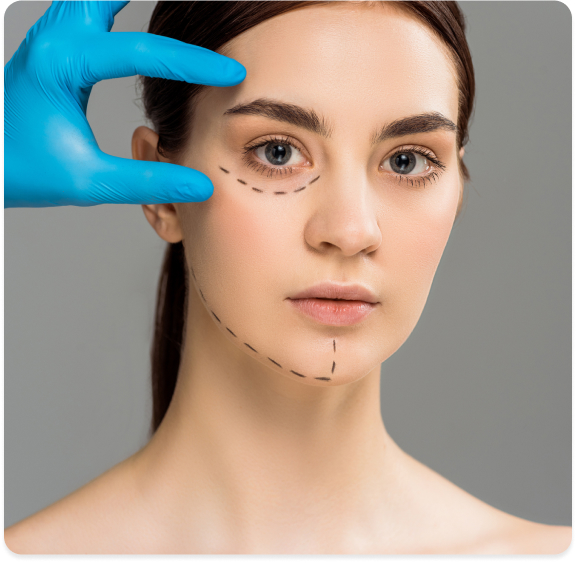Discover Lasting Freedom from Unwanted Hair
Our Range of Top-Rated Therapies
Your Comprehensive Guide to Overcoming Unwanted Hair
Excessive hair growth in areas like the face, back, or chest can be due to several factors. As discussed, one key driver is an excess of androgens, which can stimulate hair follicles to produce more hair. The distribution of these androgen-sensitive hair follicles varies across the body, but they tend to be concentrated in areas such as the face, chest, and back. That’s why these areas are particularly susceptible to excessive hair growth when androgen levels are high. It’s also worth noting that genetics plays a role in hair growth. People of certain ethnic backgrounds are more prone to developing excess hair growth in these areas, regardless of hormone levels. Lastly, certain medications, such as minoxidil or anabolic steroids, can cause hypertrichosis – a condition characterised by excessive hair growth all over the body or in specific areas.
While the primary factors driving unwanted hair growth – such as genetics and hormonal imbalances – are largely out of our control, some lifestyle modifications can help manage the condition. Maintaining a healthy weight is crucial. Overweight and obesity can increase the body’s production of androgens, leading to excessive hair growth. Hence, a balanced diet and regular physical activity can be beneficial. Another important aspect is stress management. High-stress levels can disrupt hormonal balance, potentially worsening unwanted hair growth. Practices like yoga, mindfulness, and deep breathing exercises can help manage stress levels. It should also be noted that certain dietary changes might help. Some studies suggest a low-glycemic diet, which includes whole grains and plenty of fruits and vegetables, may improve hormone balance and reduce unwanted hair growth. Additionally, if you smoke, consider quitting. Smoking can affect hormone production, exacerbating conditions like hirsutism. However, remember that while these lifestyle changes can help manage symptoms, they are not a cure-all. If you’re struggling with unwanted hair growth, it’s essential to speak with a healthcare provider to develop an effective treatment plan.
Traditional hair removal methods like waxing, shaving, or plucking are common ways people deal with unwanted hair. However, these methods come with their own sets of potential side effects. Shaving can lead to skin irritation, razor burn, and cuts. It also results in very quick regrowth, with hair often appearing thicker and darker, though this is a common misconception; the hair appears this way because it has been cut straight across. Waxing can be quite painful and may cause redness, irritation, and in some cases, temporary bumps or ingrown hairs. Both methods only provide a temporary solution and need to be repeated frequently. Plucking or tweezing can also lead to ingrown hairs and folliculitis, a bacterial or fungal infection in the hair follicles. Over time, these methods might also damage the skin, leading to discoloration or scarring. For these reasons, many people seek out more permanent and less irritating solutions like laser hair removal.
Laser hair removal is widely regarded as a more effective solution to unwanted hair because it provides longer-lasting results compared to traditional methods. This process works by directing concentrated light into the hair follicles. The pigment in the follicles absorbs the light, which destroys the hair. Laser hair removal primarily targets the melanin in the hair, leaving the surrounding skin unaffected. Because the hair follicle is destroyed, hair growth is significantly slowed down or even stopped altogether. It’s a safer and faster method than most other hair removal options and causes less damage to the skin. While the cost might be more upfront, many find the long-term results to be cost-effective. This treatment is suitable for almost every part of the body (except around the eyes), and it can treat larger areas of skin quickly and effectively.
I’ve been going to this clinic for a few years now and I just love it! It is very fancy but affordable. The staff are lovely! The manager, Christina is an angel from heaven.
Rachel Christina

I had the pleasure of visiting Nova for a skin consultation to understand more about my skin. They thoroughly discussed various options/treatments to enhance the condition of my skin.
Maryann D

Great experience with Dr Simmonds! I travel all the way from Essex to Greenwich, because the staff at Nova clinic are highly skilled and professional.
Leonie Lombard

A fantastic clinic; the environment is inviting and the staff are friendly, polite and knowledgable.
Julia

Thank you again for your high quality expertise & gentleness. Always a pleasure to come to Nova.
Tomris


I’ve been going to this clinic for a few years now and I just love it! It is very fancy but affordable. The staff are lovely! The manager, Christina is an angel from heaven.
Rachel Christina

I had the pleasure of visiting Nova for a skin consultation to understand more about my skin. They thoroughly discussed various options/treatments to enhance the condition of my skin.
Maryann D

Great experience with Dr Simmonds! I travel all the way from Essex to Greenwich, because the staff at Nova clinic are highly skilled and professional.
Leonie Lombard

A fantastic clinic; the environment is inviting and the staff are friendly, polite and knowledgable.
Julia

Thank you again for your high quality expertise & gentleness. Always a pleasure to come to Nova.
Tomris



Let us know if you have any questions.
Nova Aesthetic @ 2024
2024 – Powered by Fast Digital